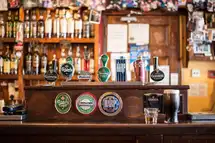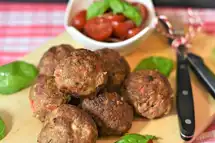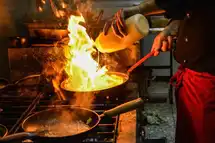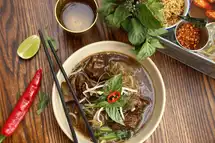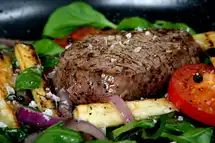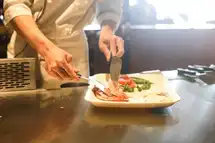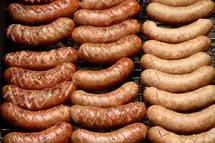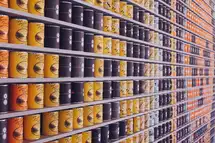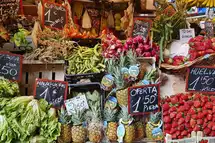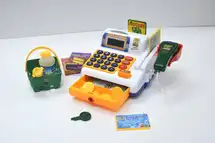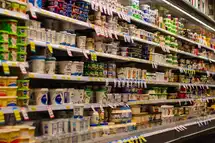What are food safety tips?
Food safety tips are a set of procedures that ensure food is stored, cooked and served in a manner that prevents contamination and food-borne illnesses. 1. Always wash your hands before handling food, and keep them clean while cooking. 2. Use separate cutting boards for raw meat, poultry, and seafood. 3. Cook food to the proper temperature to kill harmful bacteria. 4. Refrigerate leftovers promptly. 5. Avoid cross contamination by using separate utensils and surfaces for raw and cooked food. 6. Never serve food that is past its expiration date.
10 Food Safety Tips For New Quick Service Restaurant Businesses
Why is Food Safety Important?
Most people don't think twice about whether the food they eat at a restaurant is safe or notthey automatically trust what they are served. However, these foods are not to be trusted blindly. Every year, thousands of people in the United States get sick from pathogens in contaminated food, and about 3,000 people die due to foodborne illnesses. This is why food safety is so important.
When you handle food safely, you're protecting yourself and others from potential foodborne illnesses such as food poisoning and irregular bowel movement. There are four key steps to food safety- clean, separate, cook, and chill. By following these steps, you can prevent your customers from falling ill and avoid risking public health.
Common Food Safety Risks at QSRs
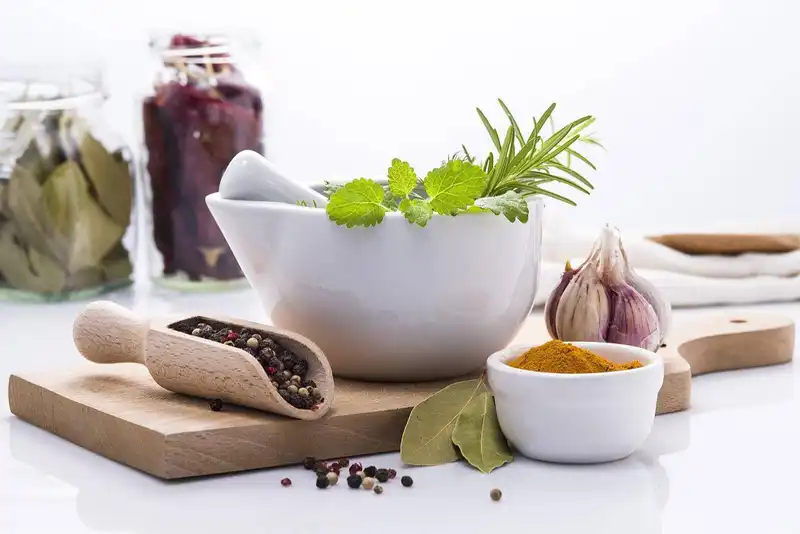
Foodborne illness is a serious problem in the United States. According to the Centers for Disease Control and Prevention (CDC), there are an estimated 48 million cases of foodborne illness each year in America alone! Of those cases, 128,000 require hospitalization and 3,000 results in death. These illnesses also cost the U.S. economy billions of dollars each year in medical expenses and lost productivity.
Quick Service Restaurants (QSR), in particular, have a history of causing food-related public health crises in the U.S. This is why food safety is especially important for QSRs, which serve hundreds of customers a day. Here are some common food safety risks QSRs face-
- One is the risk of cross-contamination, which can occur when different types of food come into contact with each other. If raw meat is improperly stored or prepared in close proximity to other foods such as vegetables or pulses, it can lead to cross-contamination. Germs can also migrate from utensils and equipment that haven't been properly cleaned between use.
- Contamination also occurs when food isn't cooked properly at the correct internal temperature, leaving harmful bacteria in it. Once the food is consumed, the bacteria can cause different kinds of foodborne illnesses.
- Quick processes at QSRs can also lead to some of the steps, such as washing and cleaning, done in a callous manner, leaving harmful bacteria and pathogens on utensils and surfaces.
- Improper cooling techniques such as leaving cooked or perishable food at room temperature for long also lead to bacterial growth and puts consumers at risk.
You've just launched your restaurant business and you want to make sure you've covered all bases.
Food safety is the primary aspect to consider. Do you know what the most food safety rules are?
Food Safety Tip No. 1- Clean Surfaces and Utensils
Keep all food preparation areas clean. This includes countertops, cutting boards, utensils and any other surfaces that come into contact with food. Thoroughly clean raw meat poultry seafood items to avoid the spread of bacteria and pathogens. Also, wash all fruits and vegetables with cold water to get rid of pathogens. Unclean and unwashed ingredients can lead to foodborne illnesses and Public Health crises.
Food Safety Tip No. 2- Cook Food Thoroughly
Cook meat poultry, seafood and eggs thoroughly. Use a food thermometer to make sure you reach the minimum internal temperature prescribed by food safety authorities for these items. This will keep your food safe from harmful bacteria and pathogens typically found on raw meat and other foods. Cooking at the right temperature kills harmful elements and renders food safe for human consumption.
Food Safety Tip No. 3- Train Your Staff
Train your staff to wash their hands thoroughly with hot soapy water for 20 seconds before preparing food, during the different food preparation stages, and also between cutting vegetables and raw meat, or poultry and seafood items. This will help get rid of dirt, grease or food particles, along with bacteria residing on the skin of workers.
You want to make sure your staff follows every food safety rule in the book.
This article lists the most important food safety practices every QSR should observe.
Food Safety Tip No. 4- Separate Cutting Boards

Bacteria and viruses are difficult to get rid of as they cannot be seen with the naked eye. They thrive on hard surfaces like countertops, utensils, and cutting boards. Use separate cutting boards and kitchen surfaces for raw meat, poultry items and fruits, vegetables and packaged items, cooked food items, and other ingredients to prevent corse-contamination. Never mix cutting boards, maintaining separate ones for meat, poultry, vegetables and so on.
Food Safety Tip No. 5- Don't Keep Food at Room Temperature For Long
Avoid letting cooked foods sit out for more than two hours at room temperature. Bacteria grows rapidly on food left at temperatures between 40 and 140 F. The best practice is to store leftovers and cooked food items in the refrigerator after lowering their temperature, or avoid consumption if the food passes the 2-hour window.
Food Safety Tip No. 6- Don't Freeze Foods For Long
If you're freezing leftovers, make sure to wrap them tightly so they don't get freezer burn. Freezer burn doesn't necessarily mean the food will make those who consume it sick, but it can lead to loss of flavor and texture. If left for several days and weeks, it may even grow fungus and other harmful pathogens.
Food Safety Tip No. 7- Label Foods Correctly
Use proper food labeling techniques to identify each food item, leftovers, uncooked ingredients, and other products correctly. Otherwise, it may lead to confusion and unsafe consumption or mixing of different food products.
Food Safety Tip No. 8- Observe Use-by and Sell-by Dates
While "use by" or "sell-by" dates are intended for a QSR's inventory rotation, they can also give you a general idea of how long the food will last. With perishable items like raw meat, dairy and eggs, it's always best to err on the side of caution and use them before their expiration date. With non-perishable items like dry goods or canned goods, you can safely use them even after their expiration date.
Food Safety Tip No. 9- Maintain the Right Temperature For Deliveries
When delivering food, maintain the prescribed food temperature to prevent spoilage. Cold food should be transported with ice in the packaging, while hot food should be delivered while it is still hot. Perishable food items should not be left out for more than two hours at room temperature. If the ambient temperature is above 90 F, food should not be left out for over an hour.
Food Safety Tip No. 10- Read Food Labels Carefully
Read food labels carefully, especially on processed foods. Avoid buying any food, even non-perishables, that do not have food labels. Be vigilant about checking the content of your food and make sure there are no allergens or other potentially dangerous ingredients that could harm you. If in doubt, don't use the item at all.
You need a handy guide to food safety practices and don't know where to find one.
This article offers you a round-up of the most important rules to follow.


